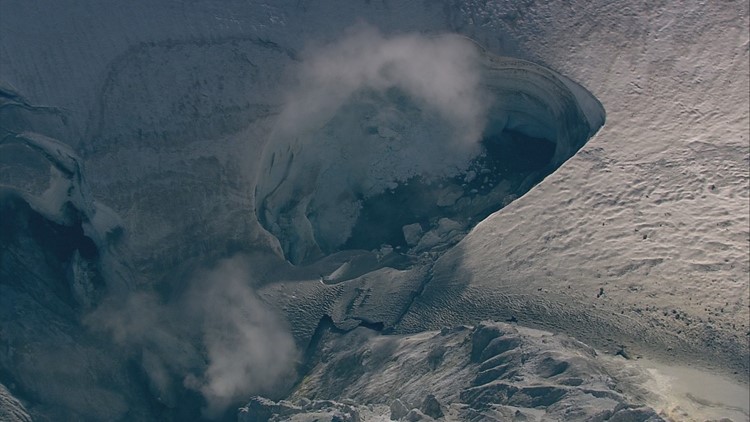Could Washington generate electrical power from the Earth’s heat near its volcanoes? That’s what will be explored early this summer as the state Department of Natural Resources drills four to five, 1,600-foot-deep wells to begin locating potential geothermal power plants.
“Our hope is that, as you go down into the Earth, these will show an elevated temperature,” said Alex Steely, Ph.D. a DNR Geologist who is working on the project. He calls them “temperature gradient” wells.
Several of the wells will be drilled near Baker Lake, off of US 20 south of Mt. Baker. On a generally clear day with little wind, we can be reminded of the steaming vent at the summit reminding us that Baker is a volcano.
RELATED: No, Mount Baker is not erupting
The other wells will be drilled about 15 miles northwest of Mount St. Helens. That steam generated by a hot vent that runs miles below the mountain and a reminder that hot rocks and molten magma are not far below the surface whether a volcano is erupting or not.
Geothermal power is not new, and the United States is the leader in overall power output. The largest geothermal power plants are The Geysers geothermal field in California, some 70 miles north of San Francisco. The first part of the complex was built in 1921 and generates more than 1,500 megawatts.
It takes more than just access to hot rocks. Steely says there needs to be natural water able to get to those rocks, creating a loop where cold water sinks and hot water rises. Much of that water is flowing through faults, or cracks in the rock structures below the surface.
Steely says we don’t need to drill that far to reach rock hot enough to generate steam.
“At a couple of kilometers of depth, the water might be 200... above boiling, essentially,” Steely said. "You put a well in to take the water out, you run it through a heat exchanger, it powers a turbine, you generate electricity, and then you reinject it in another spot and sot of close the system and keep the fluid flowing.”
That means within about a mile and one half of the surface.
DNR says it’s not getting into the business of generating power but providing the basic science which could help locate and potentially encourage utilities to build geothermal plants. Steely says they won’t be “poking” at volcanoes, and the holes aren’t much deeper than some pulling up water as it is. He also does not expect it will trigger any sort of eruption.
A third area called the Wind River Valley near the Columbia River began showing promise when test wells were drilled back in the early 1980s, as volcanic rocks are believed to be relatively close to the surface even without the presence of volcanoes.
The drilling at Baker Lake and about 15 miles northwest of Mount St. Helens is an attempt to verify computer models of heat potential, which combine expectations of hot rock within reach and permeability for water movement. A study also looked at the potential for siting thermal plants with reasonable access to the electrical grid.
Nearly two dozen countries including New Zealand, Italy, Iceland and the Philippines are also using geothermal power.



